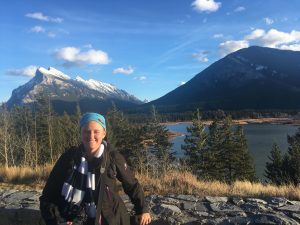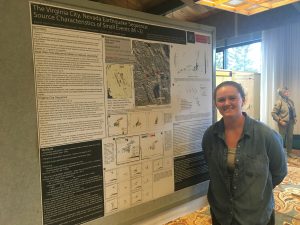At first glance, an induced seismicity workshop might seem like an odd destination for Rachel Hatch, a Ph.D. candidate at the University of Nevada, Reno.
Her interest in earthquakes started early, but it mostly revolved around seismic events with natural causes. She was born in San Francisco a month after the 1989 Loma Prieta earthquake that devastated the Bay Area, and for her master’s thesis she researched dynamically triggered earthquakes.

Now at the University of Nevada, Hatch studies small-to-moderate earthquakes in the Walker Lane tectonic region, a complex system of faults along the California and Nevada border that’s responsible for up to a quarter of all movement between the Pacific and North American plates, with the San Andreas Fault taking up the rest. Scientists suggest that eventually the region will be the main boundary between the two plates, but for now, it poses more questions than answers.
Trying to answer some of those questions, however, is what led Hatch to the 2018 Banff International Induced Seismicity Conference in Alberta, Canada.
Using data from the Nevada Seismological Laboratory to analyze the locations and source characteristics of seismic events, Hatch soon began noticing parallels with events induced by human activity, such as swarm-like behavior and lower median values of stress drop – the measurement of stress on a fault before and after an earthquake.
“It’s common for geophysicists and seismologists to come across issues and questions that force us to branch out beyond our scope of immediate expertise,” she says. “My curiosity to learn more about induced seismicity is what drew me to Banff.”
With support from her advisors to branch out beyond her immediate research interests, along with the financial support from SSA’s Global Travel Grant, Hatch was able to attend the workshop.
“I was a bit concerned that I wouldn’t have the necessary background knowledge to adequately comprehend the current issues and tasks that the induced seismicity community faces,” says Hatch.
But after attending the first talk of the conference – an overview of the field by Stanford Professor Bill Ellsworth – she felt more confident.

“The talks at the conference were informative and inspired a lot of ideas of where to take my own research,” says Hatch. “I was introduced to some new characteristics to look for in the sequences I study, such as clustering, permeability and the presence of tremor.”
The workshop was also an opportunity for her to interact with other scientists.
“Many other attendees were interested in my work,” she says. “I hope to cultivate these connections to collaborate on new projects in the future.”
Additionally, the workshop served as a reminder of the need for communication among different parties working on induced seismicity.
“It’s important for scientists, engineers, managers, politicians and the community to be more transparent to solve the hazards that induced seismicity brings,” she says. “One of my career goals is to contribute to more effective communications between seismologists and the general population.”
The SSA Global Travel Grant also allowed Hatch to take part in the workshop’s field trips, which included tours of Banff and the Radium Hot Springs.
“I got to know more about the history of Banff and the Canadian Rockies and have intimate conversations with fellow scientists away from the conference frenzy,” she says.
“Without the grant, these were experiences I wouldn’t have been able to have. The workshop exceeded all of my expectations, and I hope to return next year!”
Support the future of seismology and make a difference in a student’s life by donating to SSA’s General Fund. Global Travel Grants are supported by SSA’s general operating funds, sending our student members to conferences, meetings and other events that allow them to learn, collaborate and network.
